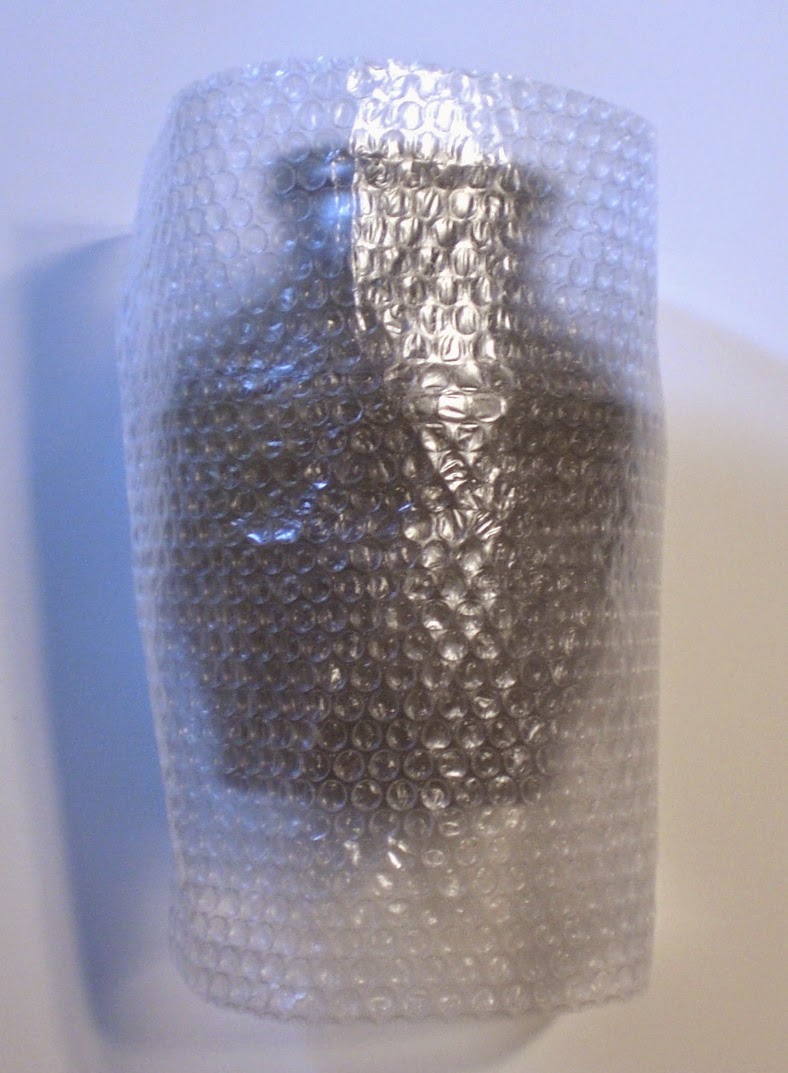I wonder how many of you have read the book
or seen some movie version of Jules Verne's' AROUND THE WORLD IN EIGHTY DAY? The
reason I ask is at times that is exactly how long it feels like for a pot to
arrive once I have been notified it has shipped. It doesn't matter if the pot
is for my wife and I, something to research or sell or a pot sent by a friend
so that I can study it, the waiting is always the hardest, wrought with anxiety
until the piece or pieces arrive here safely. Pottery is after all fragile and
packing varies from sender to sender.
The reason that this has become a current
topic is that a package was mailed out from Japan a while back and became a 44
day odyssey of misdirection and misadventure and though I have no proof, I think it also made its way to the International Space Station during its journey. The package was brought to the
Japan Post and everything went smoothly until it was time to board a plane for
the next part of the journey. The package was of course traceable and was
updated as, "origin post is preparing shipment" which in the past has
meant the piece was being loaded on to an aircraft but in this case, it just
lingered with days turning in to weeks. Both the sender and I set about trying
to trace the package but there were no results at which time an insurance claim
was initiated.
Then, out of the blue, this past Friday, our
local post office called and said there was a package for us and could we
please come and pick it up because it was very badly damaged. My wife picked it
up on her way home for lunch calling me to let me know the package appeared to
have been run over by something and was soaking wet to boot. Once she arrived
we set about taking pictures of the crushed and water logged package that was
shrink-wrapped with notices from the USPS stating how sorry they were that the
package was damaged in their care. We carefully unwrapped the package while
documenting the condition and were 110% sure the contents had to be beyond
recognition or salvage. The first thing we removed was a small cardboard box
that was soaking wet but intact and unwrapped the ceramic and lacquer lids,
both in excellent condition, next we removed the main contents that was wrapped
in a thick layer of large bubble, bubblewrap and it was also dripping wet. We carefully
removed the bubblewrap to find the wood box not only bone dry but also in
perfect condition and as we unpacked the mizusashi it came out just as it was
made in perfect condition.
Truth be told given how long the package was
missing we were hoping it would never show up as we were certain that it would
be destroyed and quite frankly, neither of us wanted to see that. We tried
figuring out the odds of the two lids, the wood box and the pot all arriving
intact and it would seem to be about 1 in 96,000. Maybe it is true, a journey
of 7000 miles does in fact begin with the first step, great packing and a
tracking number.
























